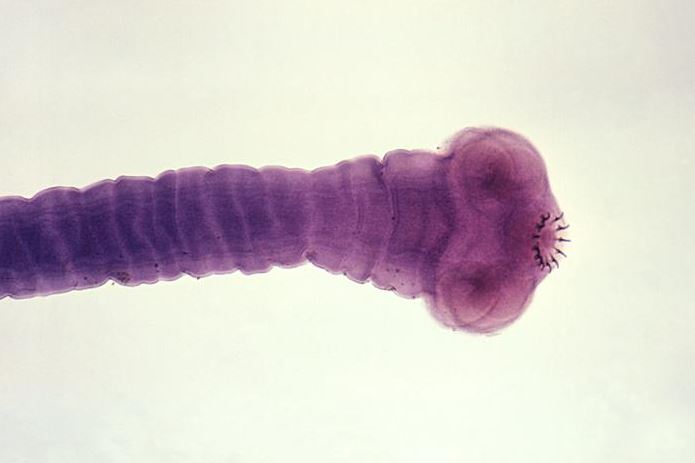Woman's odd headache was from tapeworm larvae in her brain
The woman had no risk factors for the disease and exactly how she caught it is a mystery.

A young woman in Australia was found to have tapeworm larvae lurking in her brain — a very unusual diagnosis considering she had no risk factors for the condition, according to a new report of the case.
Indeed, it's believed to be the first "locally acquired" case of the disease in Australia, that is, in someone who hadn't traveled out of the country, the report said.
The 25-year-old woman went to the hospital after experiencing headaches for a week, according to the report, published Sept. 21 in The American Journal of Tropical Medicine and Hygiene. She was no stranger to headaches — she had experienced migraines with visual "auras" on a regular basis since the age of 18. But her latest headache seemed different. It didn't go away when she took painkillers, which usually cured her headaches. And her visual symptoms were more severe, with her vision becoming blurry at times.
An MRI of her head revealed a single brain lesion, which doctors suspected was either a brain abscess or tumor.
But when doctors performed brain surgery to remove the lesion, they got a surprise. The lesion was really a cyst, and it wasn't made of human tissue. Further tests revealed that the cyst contained tapeworm larvae.
Related: 8 Awful Parasite Infections That Will Make Your Skin Crawl
The woman was diagnosed with neurocysticercosis, a parasitic disease that occurs when a person ingests microscopic eggs from a pork tapeworm (Taenia solium). When the eggs hatch, the larvae can travel throughout the body, including to the brain, muscles, skin and eyes, where they form cysts, according to the World Health Organization.
Get the world’s most fascinating discoveries delivered straight to your inbox.
After the cyst was removed, the woman did not need further treatment for the infection.
This tapeworm is common in developing nations, including countries in Latin America, Africa and Asia. The life cycle of the Taenia solium parasite usually requires pigs to have contact with human feces, and so infections are most often found in areas with poor sanitation practices in which pigs come into contact with human feces, according to the Centers for Disease Control and Prevention.
But in Australia, all previous reported cases have been among people who either immigrated to the county or traveled to areas where the disease is endemic before returning to Australia. (Similarly, in the United States, nearly all cases occur in people who have immigrated from areas where the disease is endemic.)
Exactly how the Australian woman caught the disease is a mystery. She was born in Australia and had never traveled overseas. However, people can catch neurocysticercosis from close contact with a person who is infected with the pork tapeworm. (Tapeworm carriers can pass on the parasite if they don't wash their hands properly, because the tapeworm eggs pass in the feces.) However, the woman did not report having a previous or current contact from an endemic area.
The woman did work as a barista, and so the authors speculated that she may have been exposed through her job, which entailed "ongoing casual contact with people from a variety of geographical regions." But if this did happen, it would be a very rare event, given the countless numbers of people who work in the Australian hospitality industry who haven't caught this infection, the authors said.
Still, given the ease of travel between countries, it is perhaps not surprising that "sporadic infection can occur in people who would otherwise be considered at no or very low risk of infection with T. solium," the authors said.
The Australian woman's case is similar to that of a New York woman who was diagnosed with neurocysticercosis last year. The woman, Rachel Palma, also developed the disease without having any risk factors, Live Science previously reported.
The authors of the new report hope their case raises awareness about the possible risk of locally acquired cases of neurocysticercosis occurring in non-endemic countries.
Originally published on Live Science.

Rachael is a Live Science contributor, and was a former channel editor and senior writer for Live Science between 2010 and 2022. She has a master's degree in journalism from New York University's Science, Health and Environmental Reporting Program. She also holds a B.S. in molecular biology and an M.S. in biology from the University of California, San Diego. Her work has appeared in Scienceline, The Washington Post and Scientific American.
 Live Science Plus
Live Science Plus





